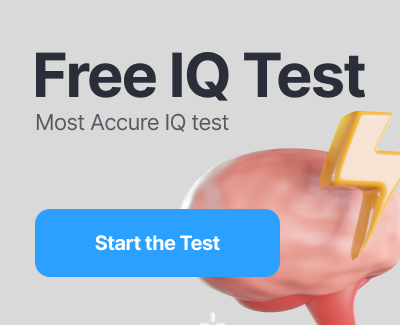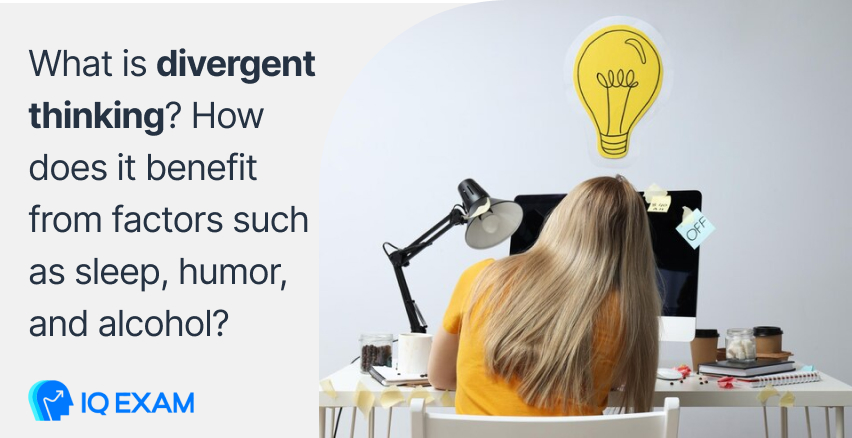
Solving a problem through divergent thinking can unravel the doors of innovation and inventiveness. It is an effective method that solves problems efficiently and helps increase creativity as well as innovation. The ability to apply this strategy can dramatically increase one’s workplace efficiency.
In this blog, we elaborate on divergent thinking – its definition and what it entails as well as the main benefits of such an approach. Moreover, we discuss the captivating influence of humor, sleep, and even alcohol on this form of thought. Let’s explore the extraordinary world of divergent thinking and its exciting implications.
What Is Divergent Thinking?
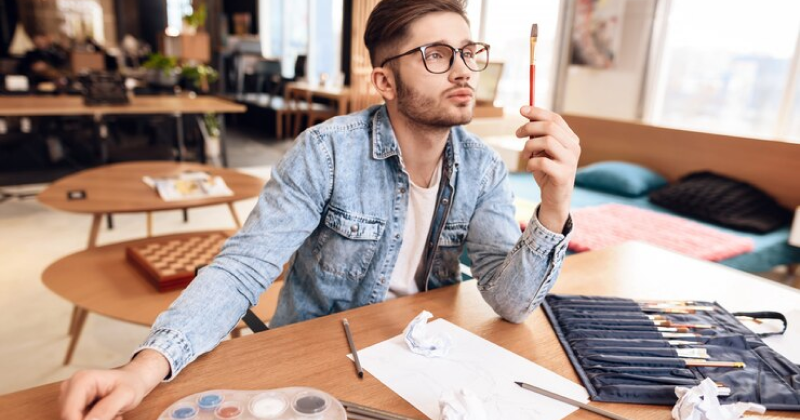
Divergent thinking refers to the ability to produce many diverse ideas or solutions. It enables one to establish connections between objects that may seem unrelated at the surface level. It is the route to problem-solving, offering novel and diverse ideas in defense of what are not typical ways of reasoning. Through this method, you may initiate with seemingly small notions and broaden your thoughts to work out numerous remedies.
History Of DT
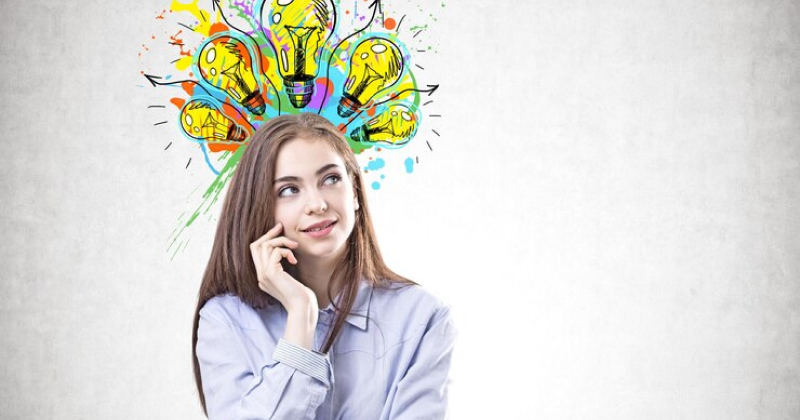
In the 1950s, J.P. Guilford defined “divergent thinking” based on fluency, which shapes flexibility, originality, and elaboration as fundamental constituents of creativity. Guilford argued that the concept of intelligence tests, based on convergent thinking (narrowing down to a single solution), was disadvantageous for creative thinkers.
Under Guilford’s guidance, the Aptitudes Research Project (ARP) at the University of Southern California developed tests such as word fluency and ideational fluency to assess creativity. These tests are popular in assessing the gifted. For example, word fluency refers to the production of words starting with a specific letter; ideational fluency lists items belonging to a particular category.
Even though creativity is highly valued in society, the educational system often poses challenges for creative people whom we are simply calling divergent thinkers. Convergent thinking is promoted by standardized tests and teaching methods, which complicate the lives of creative personalities such as Albert Einstein and Thomas Edison at most educational institutions.
Types Of Divergent Thinking
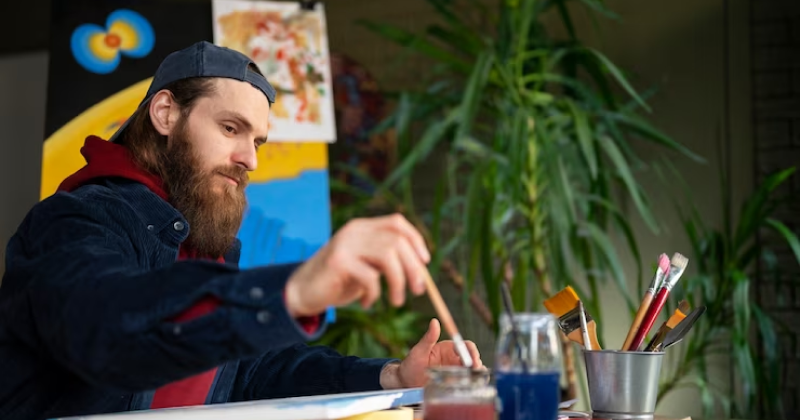
There are four types of divergent thinking:
- Fluency: It is associated with the generation of many ideas
- Flexibility: It produces thoughts across various categories
- Originality: It comprises unique or unusual thought-generating
- Elaboration: It is used for the adaptation of abstract to practical solutions.
Sleep & DT

The human race has always told stories about brilliant ideas arising from dreams during sleep. Modern studies deal with the correlation between sleep and creativity. In a study by Professor Matthew Walker in 2004, it was postulated that pondering a math problem before sleep increases the likelihood of generating novel solutions after a period of rest
In 2004, another study revealed that eight hours of sleep leads to more significant insights for cognitive tasks than just waking while resting. A report from 2012 on this subject indicated that certain smells during sleep associated with a challenge increase creativity the following day, thereby showing our brains attempt to solve issues overnight.
In 2019, a quick nap was found to improve creative problem-solving. A 2021 study suggested that there was an optimal sleep “sweet spot” between wakefulness and slumber, where even a mere fifteen seconds of selective stages improved problem-solving for math challenges.
It is interesting that not all naps are highly associated with increased creativity, as evidenced among construction workers from Korea.
The main rest is about diverse sleep stages, such as REM sleep, which influences creativity and divergent thinking.
Recent research from 2009 shows that REM sleep, also known as the rapid eye movement phase, is much more critical than non-REM sleep to solve creative type challenges such as the Remote Associates Test, a measure for convergent thinking. Starting in 1978, reports indicate that people who are REM sleep-deprived have poorer performance on divergent thinking tasks than those who are non-REM sleep-deprived. This shows that REM sleep enhances new ideas and problem-solving and supports innovative thinking, producing both novel and creatively diverse thoughts.
Now, let’s see how the lack of sleep influences creativity. Studies have shown that more than 34 percent of US adults get less sleep compared to what is needed, and over 70 million Americans struggle with persistent sleeping disorders. Research conducted in 1988 and 1992 shows that even a single night of sleep deprivation impairs divergent thinking test scores by as much as twofold. A 2014 study highlights that brain regions engaged in complex rationalization, such as the Prefrontal Cortex, are susceptible to sleep deprivation and offers an explanation of why lack of rest results in creativity.
Briefly, science reveals that sleep enables particular levels of the REM stages and is essential for enhancing creative efficiency. Conversely, lack of sleep hinders creative skills. Thus, ensuring a comfortable night’s sleep may be all needed to ignite your next bright thought.
Alcohol & DT
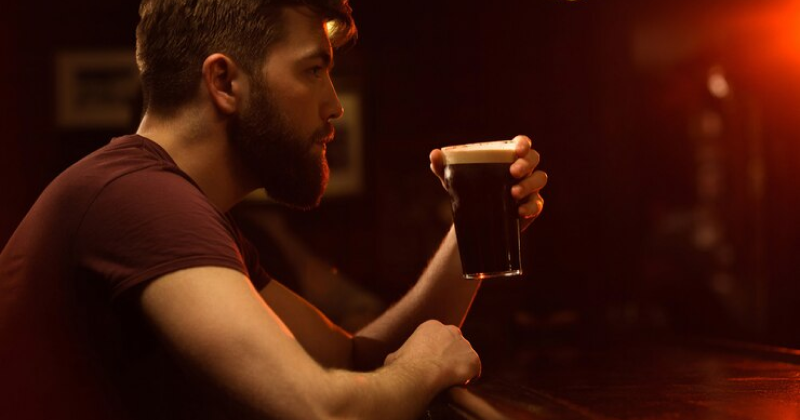
A thought-provoking question is the relationship between alcohol intoxication and divergent thinking, a cognitive process essential for creative problem-solving. Divergent thinking refers to creating numerous ideas that exceed potential solutions and differ from a facilitative concave approach.
Executive functions such as working memory, cognitive flexibility, and self-control play a crucial role in creative problem-solving. The study investigates the opposite hypothesis that reduced attentional control, induced by moderate alcohol intoxication, may lead to a higher level of divergent thinking, which is necessary for creative solutions.
Various studies hint at the effect of alcohol on attentional control, implying less state of attention under intoxication. This impact on divergent thinking, in particular, is examined through the Remote Associates Test (RAT) – a creative problem-solving task. Participants need to find the fourth word, which combines three given words into a meaningful phrase, often requiring thinking outside of the norm.
Moreover, the research pays attention to how intoxication can affect RAT solutions’ perception of “insightfulness” by respondents. The evaluation is that the participants rate whether solutions occur spontaneously or through step-by-step analytical processes. The hypothesis suggests that impoverished EF due to intoxication may increase the frequency of reported intuitive processes participation during its solution, reflecting executive control establishment influences on alcohol’s effect upon divergent thinking involved in creative endeavors.
Humor & DT

Creative thinking is one of the aspects that scientists have been studying for several years, noticing positive mood as a possible instrument to provoke creativity. Many researches correlate positive mood to improved creativity, although some studies point out a detrimental effect on specific problem-solving tasks.
The positive effect, either as a trait or a temporary state, brings an improvement in creative and problem-solving abilities because the cognitive processes become wider. It is worth mentioning that studies have demonstrated a positive correlation between higher levels of effect and augmented activity in the ACC—a brain region associated with cognitive control.
Many approaches, including comedy films and freebies, can create positive effects, but there have been few systematic comparisons between them. Positive mood ranges from deactivating to activation, unlike relaxation and happiness. Since humor and laughter create a positive effect, amusement requires a unique analysis of the specific emotional reaction.
As with creativity, humor is defined as anything funny that makes people laugh. Both are characterized by bisociation – the association of two incongruent ideas. This bisociation is regarded as an essential component of the creative thinking mechanism, associating it with humor where puns present the integration of meaning. Like humor, creativity involves characteristics such as changing frames, bringing together unrelated topics, and managing surprises.
Joking is all about shifting mental schemas or, in other words, creativity training. Humor and creativity involve linking incongruous concepts, using analogical reasoning, and developing cognitive flexibility.
Last Words
Creativity stems from natural ability, diverse experience, and innovative ideas. It can also improve with time. A large part of creativity lies in divergent thinking. Thus, you must practice and improve on it, as this will help develop your thinking skills. However, creativity through divergent thinking is only a means of evaluating or provoking the creative process. It does not merely indicate intelligence level.
